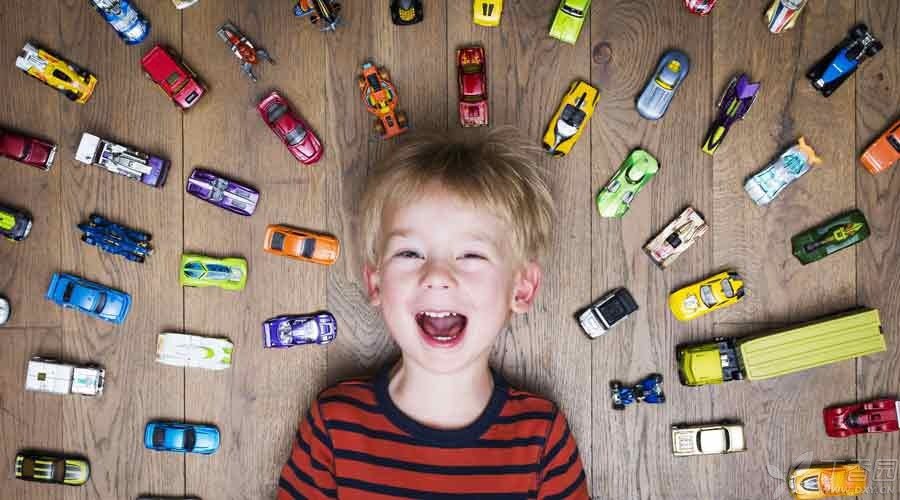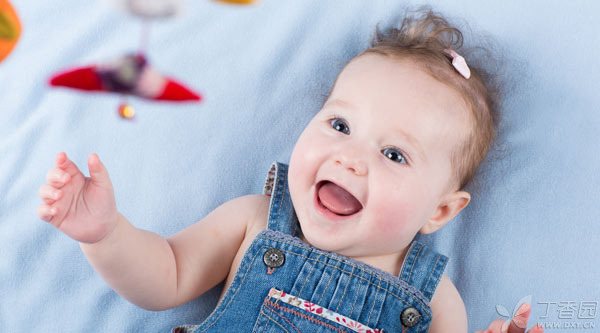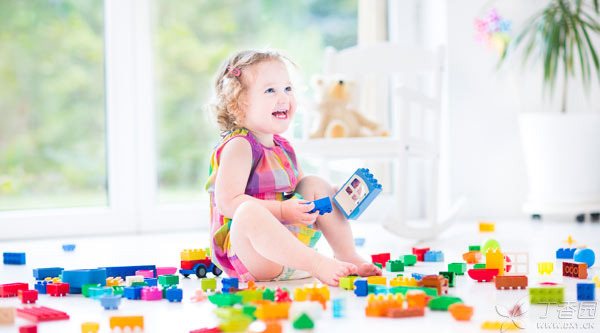
Toys are undoubtedly the most popular Children’s Day gift.
Toys can not only bring joy to children’s games, but also from another angle, toys are also [tools] for children to engage in [work].
Learning to use tools is a remarkable sign that distinguishes human beings from animals. Therefore, choosing suitable toys and corresponding games for children can help TA explore the world and promote TA’s development, especially in fine movement, language and cognitive ability.
Today, let’s briefly introduce how to choose suitable toys for children.
Choose toys according to age.
From March to March: Initial Exploration of Sense Perception
Recommendation: Ringing bell, colored ball, rattle, rocking stick, bed bell…
This stage is the initial exploration of sensory perception. At this time, the mother’s arms (touch), changes in light and shadow (vision) and wonderful sounds (hearing) can enrich the baby’s experience of the outside world.
With the development of sensory perception, it is most suitable to choose some toys with rich touch, bright colors and wonderful sound.
But don’t forget, interactive games can better promote the development of the baby. If you just spend a lot of money to buy a bed bell for the baby to watch it turn, it is better to spend tens of dollars to buy a few simple small ringing bells to take and shake with the baby!
April to June: Initial Development of Fine Movement
Recommendation: Large building blocks (wood, plastic, soft cloth), small balls, rolling balls, colored sticks, puppets…
At this time, the baby began to have the consciousness of grasping voluntarily. With the development of TA, parents should also supplement the toy library in time.
The ringing bell played before can continue to be used, but now the parents are only responsible for handing it over, and the baby should take it and shake it himself. A set of colored balls printed with patterns, several colorful soft building blocks, even walnuts, wool balls, and cloth bags sewn by himself can all be used for the baby to practice grasping.
When the baby grasps, TA can be described the name and characteristics of the grasped items to help the baby understand the language. Hold TA and sit on your chest to experience the happiness of grasping with TA. Help the baby adapt to sitting and playing with toys, and also prevent TA from stuffing something that shouldn’t be stuffed into his mouth.

From July to September, fine movement developed rapidly.
Recommendations: building block boxes, wooden sticks, egg-laying ducklings, crawling tunnels, towing carts, tumblers…
Babies can pick up smaller things, and they will pick up two things at the same time and try to make some [contact] with them. In addition, learning to sit alone and crawl also expands the baby’s activity space so that they can contact more things.
At this time, we can provide more kinds of toys for the baby:
- A set of building blocks of various shapes with several small colored bowls can help TA learn to grasp, take out and put in. A duckling that can [walk] everywhere and lay eggs can bring more fun and motivation to TA’s crawling. A toy that can be pushed and pulled will make TA think intently about the mystery of wheels.
Babies will also be interested in toys for older children and gradually begin to imitate the practices of older children or adults.
At this time, more parent-child games should be integrated into the application of toys. Parents can explain the names of these toys and demonstrate the process of the games. When the baby wants to imitate your practice, give encouragement and help!
From October to December, coarse and fine movements continued to develop.
Recommendation: cloth books, rings or towers, drums, plastic rubber balls, pushing cars, building block boxes…
At this stage, the cognitive ability is further improved. The baby can hold the furniture to stand up and try to take two steps, operate the objects more skillfully, and begin to understand some simple spatial relationships.
- You can use building blocks, ferrules, etc. to design some space games so that your baby can understand the simple space relationship between front and back, inside and outside. Cloth books can train babies’ fine abilities, such as turning over books. Let the baby push the toy trolley or the ball by himself, which can exercise the muscle strength of the limbs.
Note: The trolley here is not the kind of walker that lets the baby stand in the middle with wheels rolling. This walker has great potential safety hazard and may also affect the baby’s development. It is not recommended to use it.
1 ~ 2 Years Old: Continuous Development of Cognitive and Language Proficiency
Recommendation: building blocks, shape boxes, matching boxes, game sticks, beads, picture books, crayons, small blackboards, small soccer, jigsaw puzzles (simple)…
At this stage, the baby can understand most of the life scenes and begin to try to express them in words, while learning and imitating them more actively.
- When designing the game, we can mainly build the preliminary object relationship, such as building blocks, placing shape boards, splicing game sticks, etc., to guide the baby to learn and imitate to build the preliminary space structure; Introduce picture books with simple patterns and clear colors (it is better not to have very complicated story lines) and start to form the habit of reading with your baby. Continue to use ball games to enrich the baby’s athletic ability. There are toy ball games (kick, push and receive), tennis balls (throw and receive), etc. to choose from.
It is also possible to slowly introduce real [tools], the most representative of which is the use of paper and pen. At first, crayons can be used for simple line drawing or circle drawing, and toys such as beads and matching boxes can also be selected.
2 ~ 6 years old: children’s development is roughly perfect,
Recommendation: Creatively build toys, snowflakes, colored mud, paper cuts, picture books, colored pens and paper, all kinds of ball games, scooters, bicycles, small basketball stands, house toys, jigsaw puzzles, models, beach toys, play toys…
When choosing toys at this stage, more consideration is given to children’s interests and specialties.
- Boys who love sports can choose more sports [tools], such as scooters, bicycles, roller skating, football, basketball, etc. Quiet girls can choose some situational toys, such as dressing up dolls and simulating kitchens. Children who like handwork can choose colored mud, paper cutting, building blocks, etc.
Books and tools for playing with sand are applicable to all children, but the former is parents’ favorite and the latter is children’s favorite!

Play more with one thing and let toys accompany the baby to grow up.
Toys are piled up everywhere in the home. I believe it is the common worry of many parents that children play with this and lose that.
In fact, children’s desire for the number of toys is not so strong, parents do not need to buy too many toys at all. Choose a good toy and design several different ways to play, so that children will not lose interest in it for months or even years.
For example, many families may have several sets of building blocks, which children put on the shelf after building several times. In fact, these building blocks can be played from 6 months to 6 years old:
After 6 months, take out some of them with different shapes and let the baby exercise and grasp them. After 9 months, take out about 10 yuan and cooperate with several small bowls or boxes to let the baby take out and put it in. At the age of 1, he took out 20 pieces and began to imitate the construction. One and a half years old, take out different colors, color identification; 2 years old, take out different shapes, identify the shapes, and then try to build the same [building] with different shapes; At the age of 2.5, he took out 50 building blocks and imitated the construction of a medium-sized [building]. At the age of 3, after building the [castle], let the baby still draw. At the age of 3.5, after taking the [ship] according to the picture, I told the story of the boat trip last month with my baby. At the age of 4, I went to the zoo for kindergarten activities today. Let the baby recall and build a giraffe or a big lion. At the age of 5, we saw dominoes on TV. Let’s try them with our own building blocks. At the age of 6, the [crazy bird] who is popular in the world can also play a game with our building blocks!
Of course, it is not to let everyone just buy a set of building blocks, but to let everyone know that good toys can give rise to endless games.
Security issues cannot be ignored all the time.
Choosing manufacturers with quality assurance, physical stores with public praise or e-commerce channels is the premise to ensure toy safety.
In addition, before using each toy, carefully read the instructions and safety warnings, especially pay attention to toys with small parts and broken risks, which are not suitable for children under 3 years old. The use of all toys should be under the supervision of the supervisor, and all toys or articles with safety risks should be refused.
It is worth noting that children often easily like electronic toys, such as tablet computers, but indulging in them is counterproductive.
For toys, parents should strengthen guidance. For children, games that conform to the law of development and contact with nature are the most suitable.
Editor: Fu Ting
Author: Hou Fanghua
